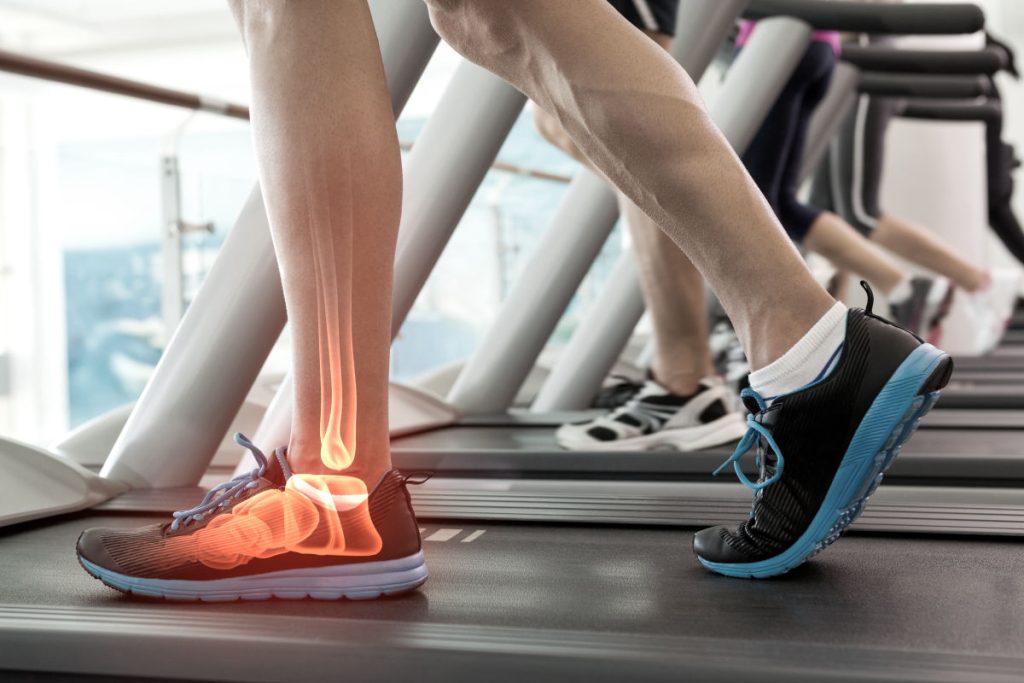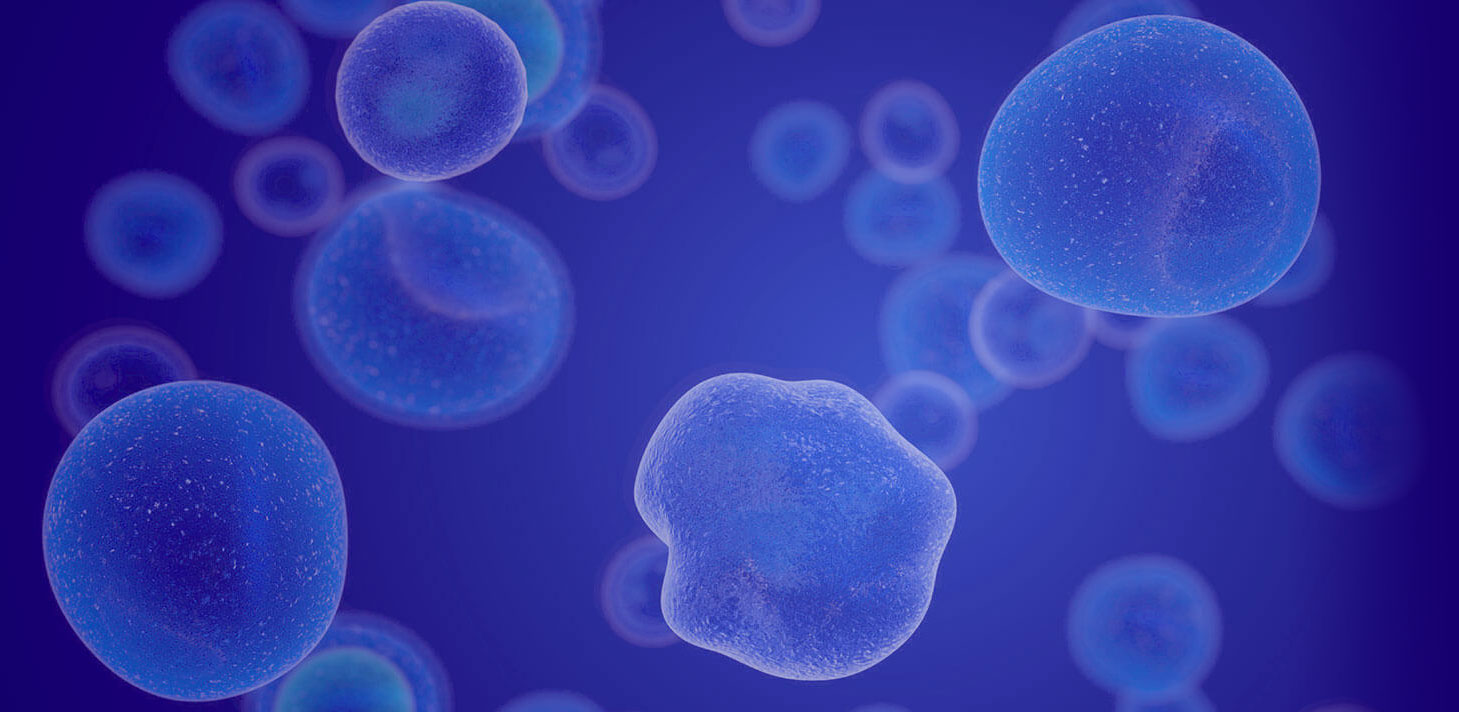Foot & Ankle Pain
Conveniently located to serve the areas of Greenville, SC, Spartanburg, SC, Columbia, SC, Anderson, SC and Asheville, NC

Foot and ankle pain is a multifaceted problem that requires a comprehensive assessment of your posture, health, and overall body mechanics. The feet and ankles support our entire body and are greatly affected by misalignments in how we stand, walk, and run. Pain in this area can make everyday activities extremely difficult. With the regenerative power of stem cells, you can mitigate this pain as you seek to find a long-term solution for your foot care needs.
At Daisy Stem Cell Therapy and Advanced Regenerative Medicine Centers of the Carolinas, we believe in guiding patients toward treatments that prevent or delay the need for invasive procedures. With over 25 years of experience in pain management research, Dr. John C. Haasis III can review your condition/s with a comprehensive, educated lens, prescribing a stem cell plan that will get you back to the activities you love. Stem cells are part of regenerative medicine- a field of science that studies the healing capabilities of human body components.
The Daisy Institute’s focus on reducing symptoms associated with both chronic and acute conditions can be a life-changing experience. To get started today, call (864) 775-5682, inquire with our contact form, or visit one of our 5 locations in North and South Carolina:
Contents
The Basics of Stem Cells
Stem cells have the extraordinary ability to develop into different types of cells in the body. This makes them an invaluable resource for tissue engineering and cellular therapy. There are various types of stem cells, each with its own distinct characteristics and potential applications, holding immense promise for treating a wide range of diseases and injuries.
Connective tissues like cartilage, bone, ligaments, and tendons are produced by mesenchymal stem cells (MSCs), a type of stem cell that can be harvested from a placenta. MSCs not only make the cells that produce the tissues needed to heal injuries, but they also encourage angiogenesis, a process in which the body creates new blood vessels. With better blood circulation to the sites of chronic and acute injuries, damaged tissues can heal themselves more quickly. The boost of MSCs into the targeted area can speed up healing processes in these areas. (1) The Daisy Institute also utilizes hematopoietic stem cells (HSCs) that give rise to blood cells. Research finds that HSCs play a critical role in wound-healing processes and immune responses to infection. (2)
Foot and Ankle Pain Relief
The foot is a complex structure with 26 bones and over 100 muscles, ligaments, and tendons. Because of the complexity of the feet, there are a multitude of different reasons for pain. Though the ankle has the strongest tendon in the human body, it is also the most susceptible to injury. Both feet and ankles must work in tandem for pain-free mobility.
To implement an effective treatment plan, Dr. Haasis must fully understand and pay close attention to the severity of the pain, the location, your history with it, the changes you’ve made in your lifestyle and foot support, and other chronic conditions that could be affecting your vascularization and nerve function. Getting a proper diagnosis is the first step, then, Dr. Haasis can introduce to you his stem cell therapy to help you feel like your most capable self.
Stem cells can help treat symptoms of the following conditions:
- Ankle Sprains and Strains – While a sprain impacts the ligaments of the foot and ankle (the connective tissues that attach bone to bone), a strain affects the tendons (the connective tissues that attach bone to muscle). Though stem cells can’t repair these injuries overnight, they can trigger cellular proliferation to help heal the microtears and overstretched tissues of an ankle/foot sprain or strain.
- Achilles Tendonitis – Tendonitis, in general, is a broad term that refers to inflammation of a tendon caused by repetitive or unhealthy movement. The Achilles tendon at the ankle can experience pain with improper running, jumping, or lack of stretching. Other issues that can contribute to the severity of Achilles tendonitis are excess weight, inflexibility, and using non-supportive footwear.
- Foot Arthritis – The foot has 30 joints that can suffer from the effects of aging and overuse. When the cushioning cartilage tissue in between these joints wears down, the big toe joint, the ankle, and the midfoot can experience pain.
- Ankle Bursitis – This condition is caused by inflamed bursae, the small sacs of fluid that provide lubrication for the joints.
- Bunion and Hammer Toe Pain – Bunions are characterized by excessive bone growth and misalignment of the big toe or pinky toe, causing it to jut outward unnaturally. Although usually harmless, the condition can become painful as more bone begins to interfere with the toe joint. Meanwhile, muscles and tendons of the foot can contribute to hammer toes- a condition where the toe bends excessively.
- Morton Neuroma – This nerve issue is caused by inflammation of the tissues surrounding a toe nerve, leading to numbness, pressure, and burning sensations.
- Plantar Fasciitis – Repetitive stress and pressure at the bottom of the foot and heel can cause inflammation and microtears in the fascia, a layer of connective tissue.
- Heel spurs – It commonly occurs alongside plantar fasciitis; with this condition, more calcium deposits build up at the heel, causing pain.
- Ankle and Foot Stiffness (related to neurodegenerative disorders) – Conditions like Parkinson’s and Multiple Sclerosis (MS) can affect overall body mobility and limit flexibility, increasing the likelihood of experiencing pain and repetitive injuries.
- Foot and ankle neuropathy. If you have numbness or tingling sensations in your feet and ankles, you may have peripheral neuropathy- a condition where the nerves become inflamed. Many more serious conditions- like diabetes- can cause it, so it’s important to get a thorough evaluation.
Stem cells should be used in conjunction with other treatments like resting, ice/heat, bandaging, physical therapy, and other prescribed treatments by your doctor. Still, you can achieve significant relief with the anti-inflammatory and healing properties of MSCs and HSCs.
Personal Consultation
When you schedule a personal consultation at the Daisy Institute, you can expect to receive a comprehensive review of your condition and an examination of the pain you’re experiencing. Dr. Haasis will look at your medical history, the types of physical activities you do, and the measures you have taken to relieve your pain so far. He will ensure that you get the high-quality stem cell treatment you deserve, implementing the most advanced research in the field. Visit one of our 5 offices located throughout South and North Carolina, call (864) 775-5682, or go online to schedule your consultation as soon as possible.
Procedure Steps
The Daisy Institute’s method of administering stem cells is relatively simple, quick, and easy since there is no bone marrow aspiration involved. Instead, Dr. Haasis utilizes a purified sample of stem cells and prepares them into syringes. These samples have been subjected to centrifugation, a process in which they are spun in order to separate the stem cells from other unneeded cells. (3) Before injecting directly into the area of pain, Dr. Haasis will give you a local anesthetic to eliminate any discomfort. Depending on your specific condition and pain level, he will inject the stem cells in several locations in and around the affected foot and ankle area.
Recovery and Results
You may feel some tenderness and discomfort in the injection areas for about 2 to 7 days following your stem cell treatment. Since the procedure is relatively easy, Dr. Haasis will only suggest taking over-the-counter medications to relieve these side effects. You should be mindful of avoiding blood thinning medications that can impede the effectiveness of the stem cells.
As the side effects begin to subside, you should expect to feel the results settle in. You will likely notice more comfortable mobility and less pain overall as the weeks go on. As soon as you’re able to, you should participate in physical therapy if your condition warrants it. Stem cells aren’t meant to be the sole treatment for your pain, but they can regenerate damaged tissues, reduce inflammation, and make other treatments more manageable.
Depending on your unique physiology, you may get to enjoy the benefits for many years to come. For some, the results can last several months. Since stem cells are effective at repairing and strengthening- not just masking the symptoms of pain– you can expect your treated foot/ankle to have more resilience against future injuries.
Cost of Stem Cells in South Carolina
The cost of your stem cell therapy will mostly depend on the number of injections you will require and if you decide to undergo several sessions to maximize your results. At the time of your first appointment, Dr. Haasis will be able to give you a cost estimate that takes into account your specific condition and symptoms. If you want to learn more about the regenerative treatments offered at the Daisy Institute, browse through our blog.
Take charge of controlling your foot and ankle pain today by calling (864) 775-5682, filling out our online form, or visiting our several locations in the Carolinas:
References
- Vasanthan J, Gurusamy N, Rajasingh S, et al. Role of Human Mesenchymal Stem Cells in Regenerative Therapy. Cells. 2020;10(1):54. doi:https://doi.org/10.3390/cells10010054
- Lee JY, Hong SH. Hematopoietic Stem Cells and Their Roles in Tissue Regeneration. International Journal of Stem Cells. 2019;13(1). doi:https://doi.org/10.15283/ijsc19127
- Pelekanos RA, Sardesai VS, Futrega K, Lott WB, Kuhn M, Doran MR. Isolation and Expansion of Mesenchymal Stem/Stromal Cells Derived from Human Placenta Tissue. Journal of Visualized Experiments. 2016;(112). doi:https://doi.org/10.3791/54204


